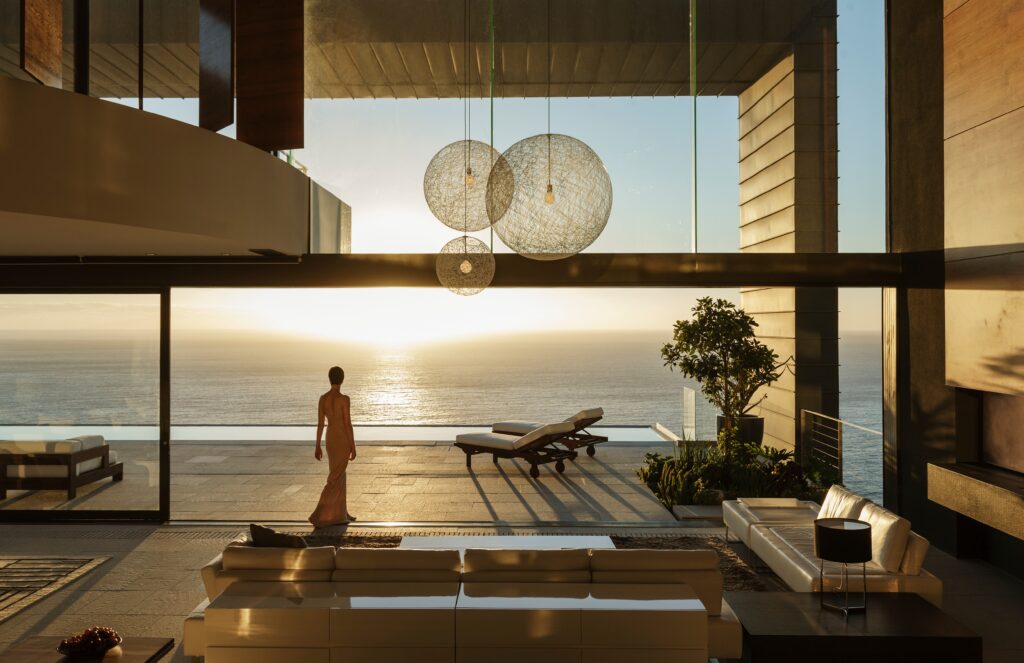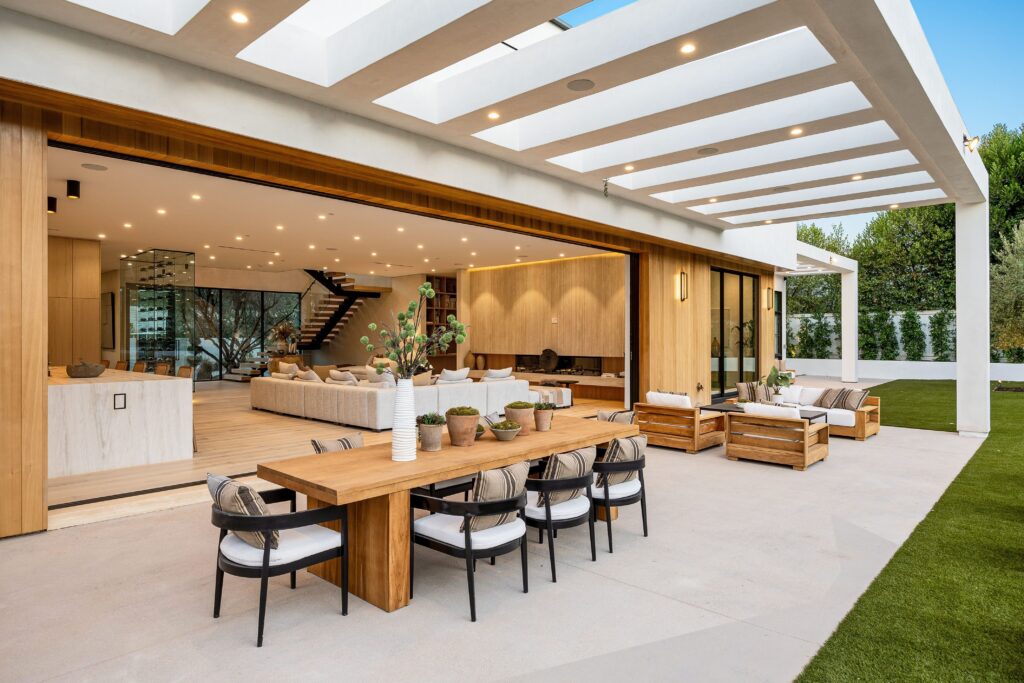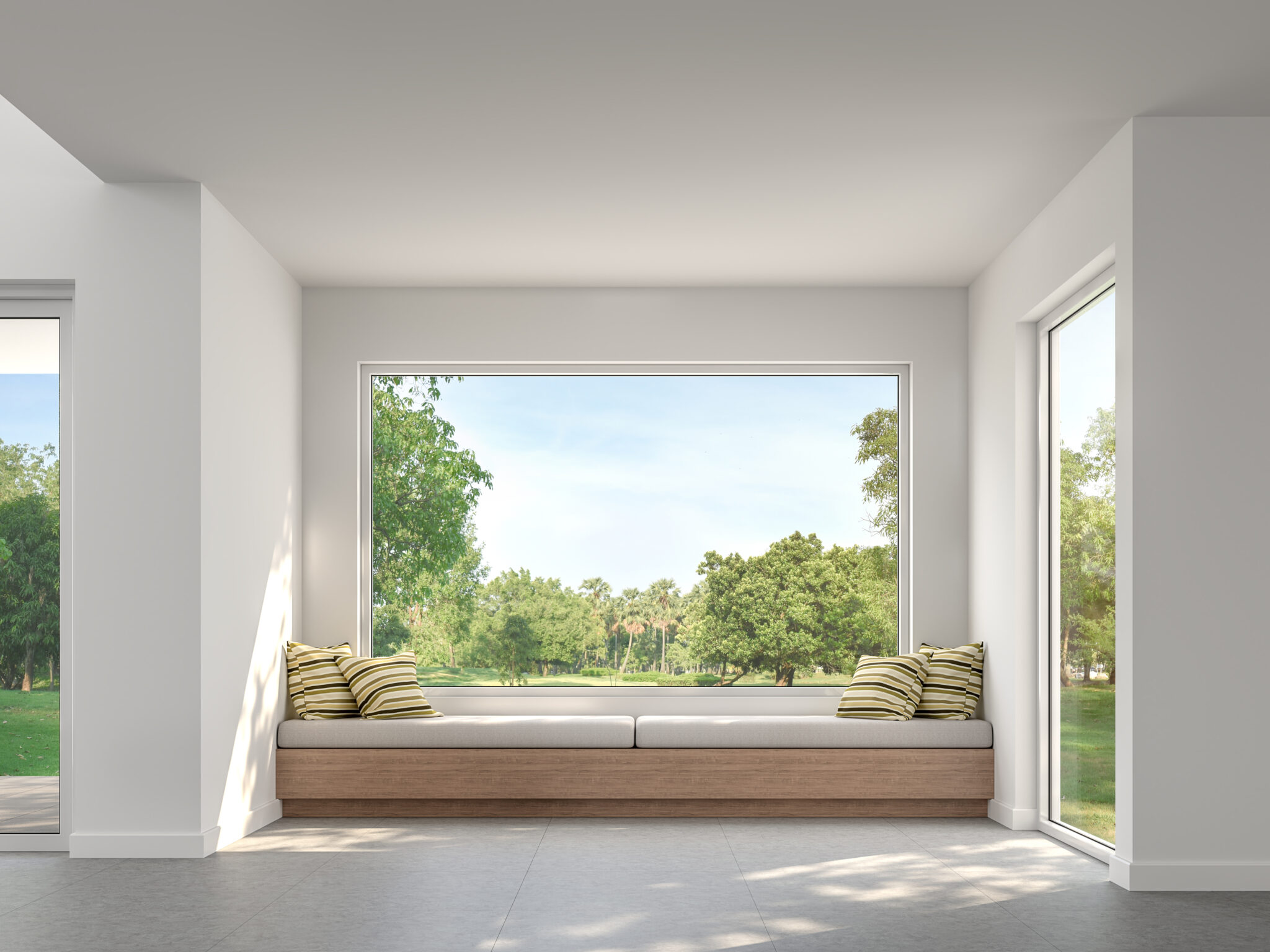Designing a luxury home with scenic vistas requires blending architecture, interior design, and landscape elements in a way that maximizes the natural beauty outside while maintaining comfort and sophistication inside. Whether you’re overlooking a city skyline, the ocean, mountains, or a lush forest, here are key strategies to create a luxury home that makes the most of its breathtaking views:

Maximize Window Placement and Design
Floor-to-Ceiling Windows: Large, expansive windows are the most obvious way to frame a scenic vista. Consider floor-to-ceiling windows or sliding glass doors that open onto terraces or balconies. These provide unobstructed views and flood the interior with natural light, creating a seamless transition between indoor and outdoor spaces.
Corner Windows: For a panoramic effect, corner windows are ideal. These windows offer sweeping, 180-degree views, allowing the outside landscape to become an integral part of the home’s design.
Framed Views: Position windows and openings strategically to frame key views, whether it’s the mountains, ocean, or an urban skyline. The view should feel like a piece of art, integrated into the home’s design without being overwhelming.
Open, Flowing Layouts
Open-Concept Spaces: To enhance the experience of being surrounded by nature, design open-concept living spaces where the kitchen, dining, and living areas flow seamlessly. Avoid walls or barriers that obstruct the view; instead, focus on furniture arrangements and architecture that highlight the outside vistas.

Indoor/Outdoor Living: Create an effortless connection to the outdoors by incorporating sliding or folding glass doors that open to patios, terraces, or infinity pools. This encourages an indoor/outdoor lifestyle and lets you fully embrace the natural surroundings.
Centralized Rooms: Place the most important living spaces, such as the living room or master bedroom, in a position that maximizes the view. Rooms with the best vistas should be centrally located to ensure that anyone in the space can enjoy the scenery.
Strategic Landscaping
Landscape as a Frame: Landscaping plays a vital role in complementing the view. Use plants, trees, and natural elements that frame the view, creating an idyllic setting. For example, strategically planted trees can soften the edge of a cityscape or add depth to a mountain view.
Outdoor Spaces: Design outdoor living areas that encourage interaction with nature. A luxurious terrace or deck, an infinity pool, or an outdoor kitchen/dining area can bring you closer to the scenery while also providing areas to entertain or relax.
Use of Natural Materials: Incorporating natural elements such as stone, wood, or water features can help integrate the landscape into your home. For example, a stone pathway leading to a scenic lookout point or a firepit with mountain views enhances the connection between home and the environment.
Interior Design That Reflects the Surroundings
Neutral and Natural Palettes: Keep interior design elements neutral to complement, rather than compete with, the natural beauty outside. Use light colors such as whites, beige, and soft greys paired with natural textures like wood, stone, and linen to maintain a tranquil and sophisticated feel.

Reflective and Transparent Surfaces: Incorporate materials that reflect or enhance the outdoor views, such as mirrors, glass, and polished surfaces. Transparent furniture or glass partitions can help maintain an open, airy feeling that doesn’t obstruct sightlines.
Artwork and Décor: Choose décor that mirrors the landscape, using abstract pieces, natural motifs, or colors that echo the environment. For example, if you’re overlooking the ocean, marine-inspired décor or ocean-colored accents can create a harmonious connection to the view.
Smart Integration of Technology
Automated Window Treatments: To control light and privacy, integrate automated window treatments like motorized shades or drapes. These can be programmed to adjust based on the time of day or weather conditions, allowing you to maintain an unobstructed view when desired or provide shade when needed.
High-Performance Glass: To enhance the view and maintain comfort, invest in high-performance, low-emissivity glass. This ensures energy efficiency, reduces glare, and blocks UV rays without sacrificing the clarity of the view.
Integrated Audio/Visual Systems: For homes with spectacular views, technology mustn’t detract from the experience. Design with built-in sound systems, speakers hidden within walls or ceilings, and minimalist entertainment systems that keep the focus on the view while still providing a luxurious, high-tech environment.
Consider the Seasons and Natural Elements
Seasonal Adjustments: Do not forget about seasonal changes. In colder climates, make sure the home has large, insulated windows that still offer a clear view, while in warmer regions, ensure that the windows are designed for natural ventilation and sun control.

Weather-Proof Furniture: If your luxury home is designed for a particular climate, be sure to use weather-resistant furniture and materials for any outdoor areas. This ensures that your outdoor living spaces remain as luxurious and comfortable as the interior year-round.
By focusing on these key design elements—maximizing views, creating an open flow, enhancing landscaping, using natural materials, and integrating technology—you can create a luxury home that perfectly frames and embraces its scenic vistas, making the natural beauty outside feel like a natural extension of your living space.



